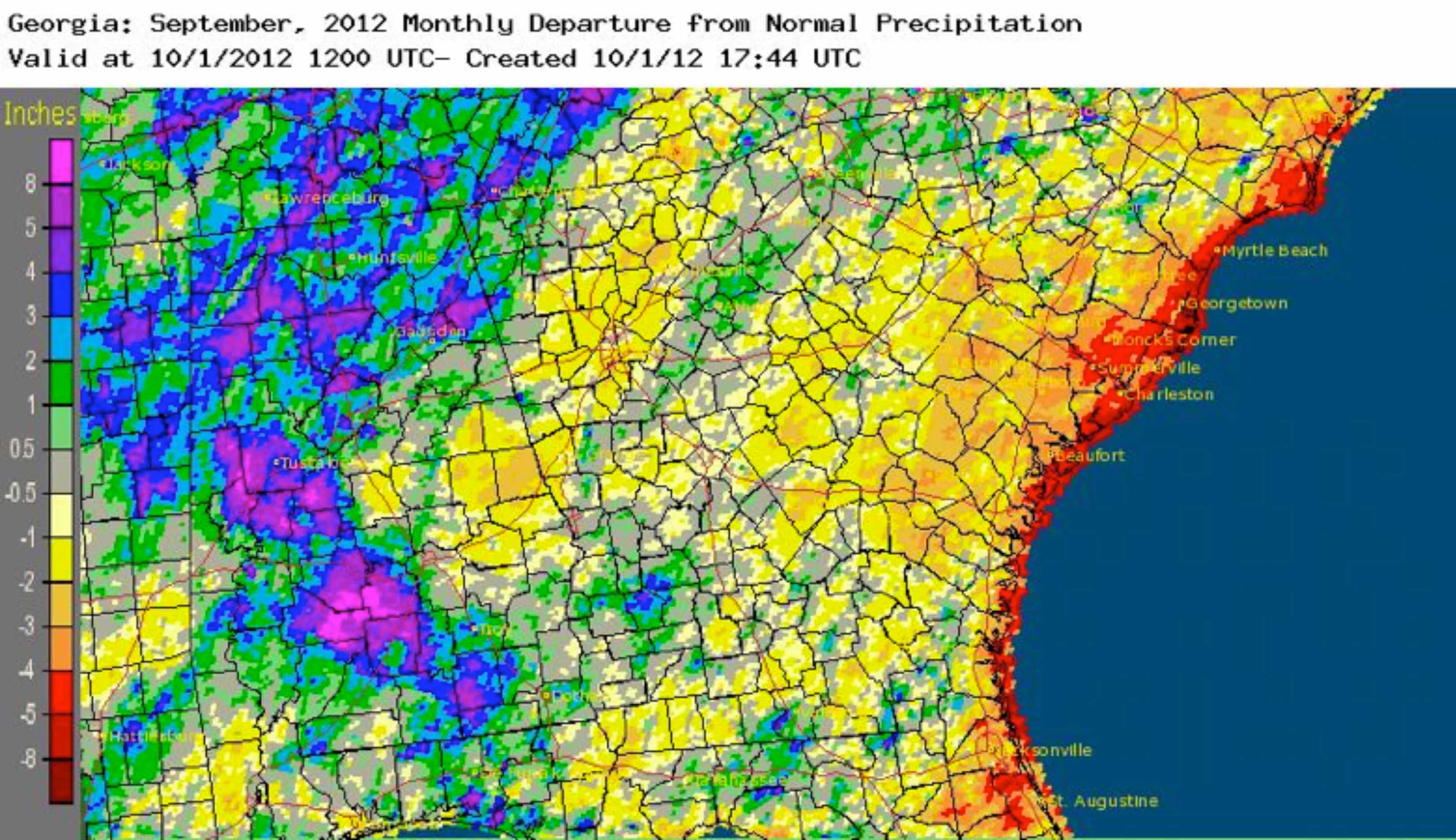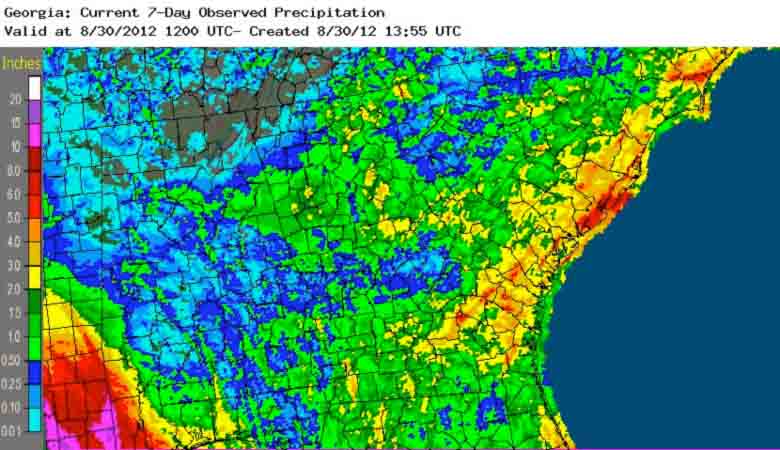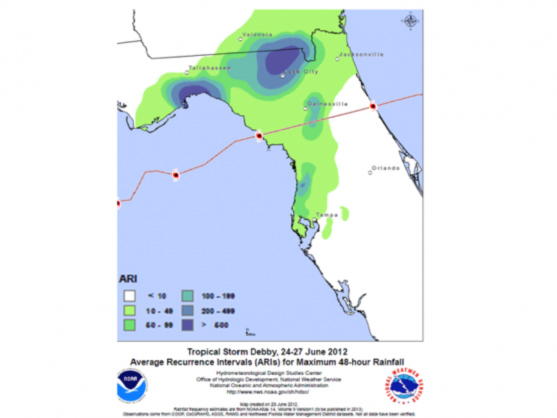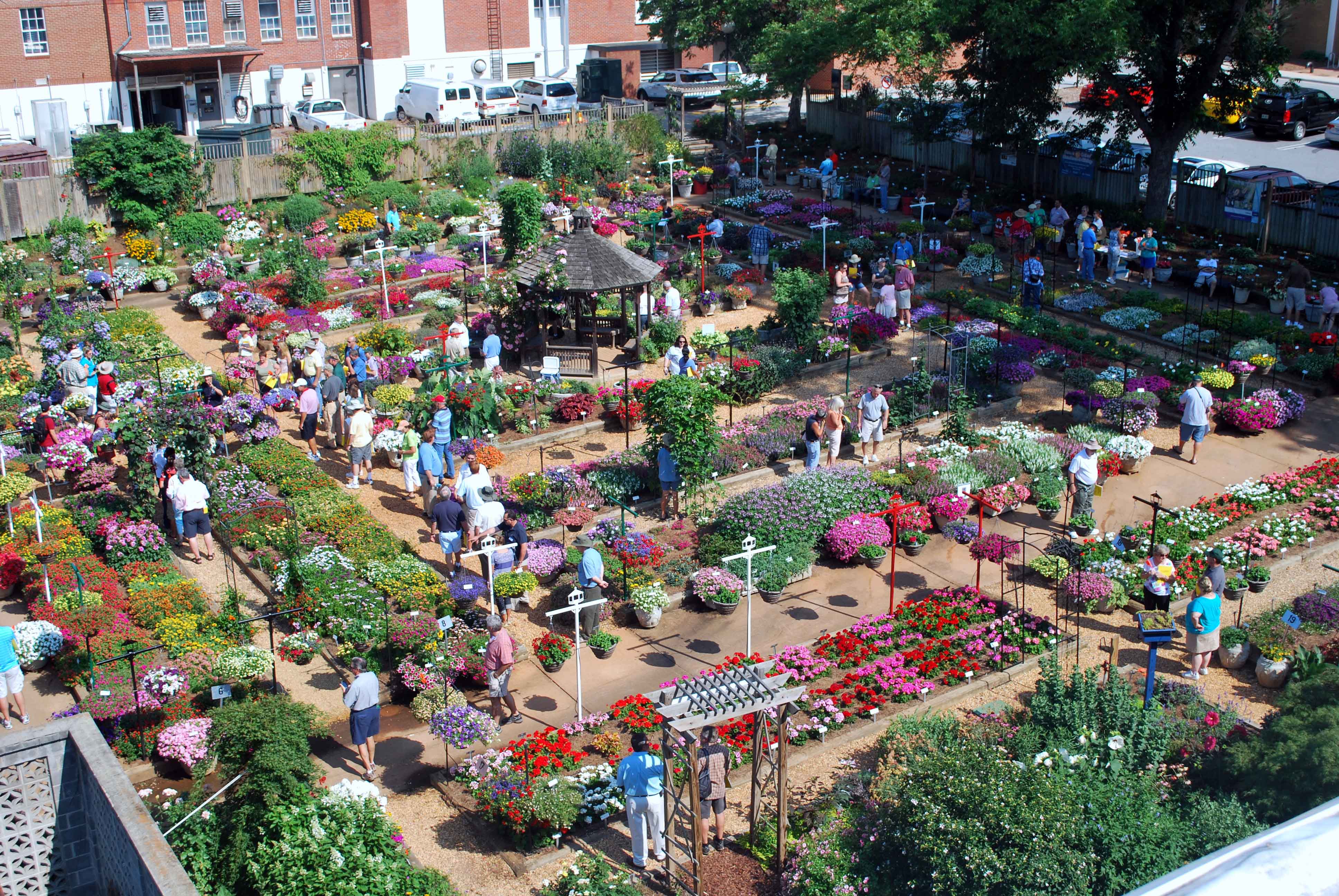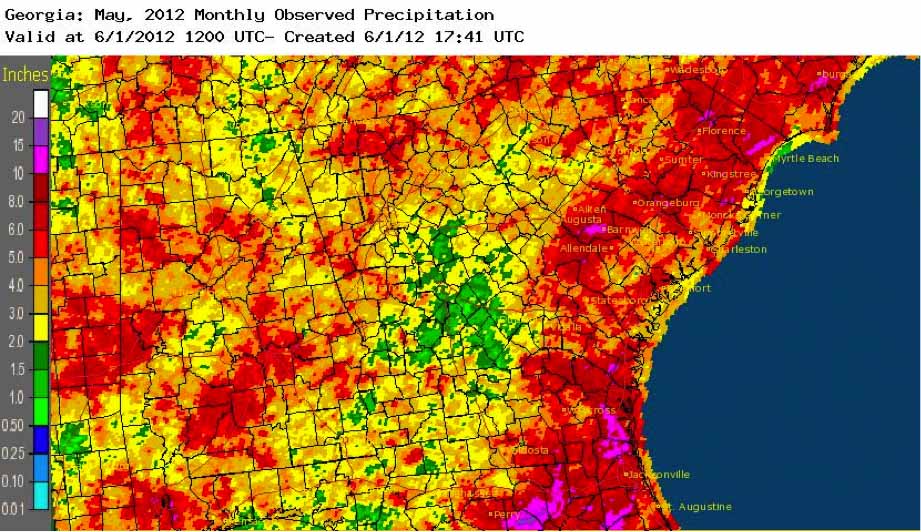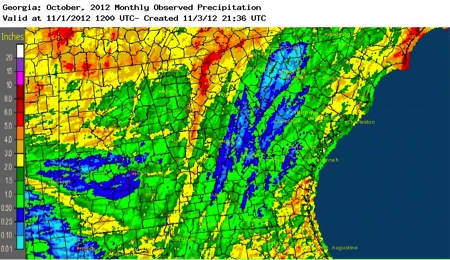 CAES News
CAES News
October weather
Temperatures in Georgia were within one degree of normal across the state in October. Rainfall continued to be light across most of the state, continuing a trend from a dry September. A narrow band stretching from Columbus to the northeast mountains was the only area of the state that received higher than normal rainfall.


